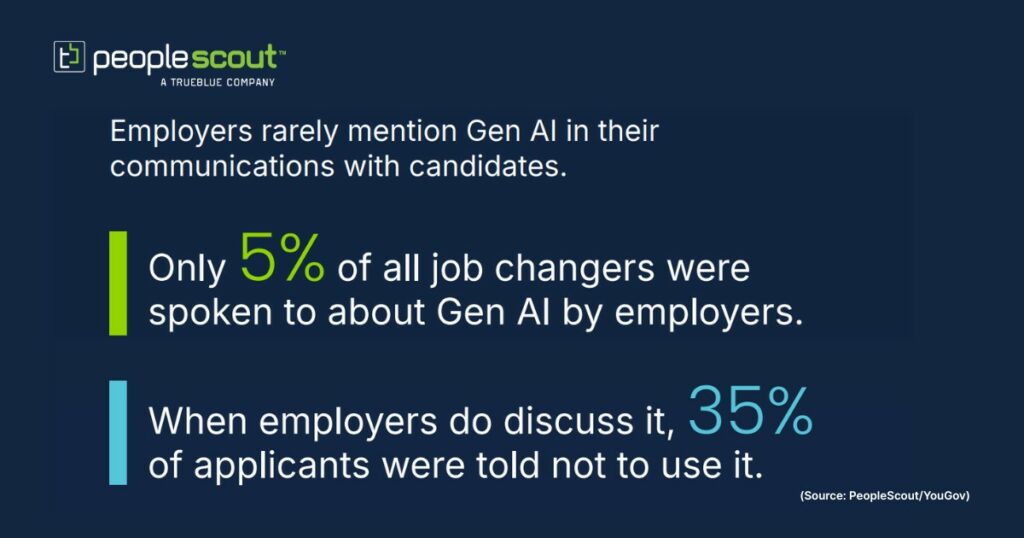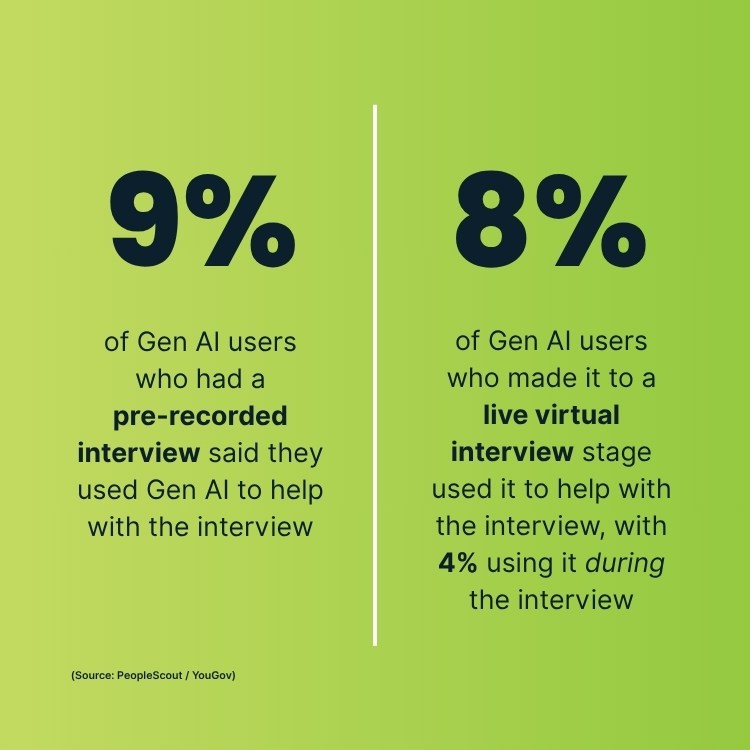As the demand for candidate quality intensifies, talent acquisition leaders are constantly seeking new ways to reach qualified candidates more efficiently. Enter programmatic recruitment advertising—a technology-driven approach that’s revolutionizing how companies connect with potential employees.
What is Programmatic Advertising?
Programmatic advertising is the automated buying and selling of digital advertising space using artificial intelligence and real-time bidding. Instead of manually negotiating ad placements with individual websites or platforms, programmatic technology uses algorithms to purchase the most relevant placements in milliseconds, targeting specific audiences based on detailed data profiles.
These programs simultaneously monitor thousands of websites, analyze user behavior, and place job advertisements in front of the right candidates at the optimal moment.
How Programmatic Advertising for Recruitment Works
The process begins when a candidate visits a website or uses an app. In that instant, information about the user (their location, browsing history, professional interests and demographic data) is sent to an advertising exchange. Your recruitment campaign, which you’ve created with specific targeting parameters, competes in an automated auction against other advertisers. If your bid wins, your job advertisement appears to that candidate—all within the time it takes for the webpage to load.
This real-time decision-making process ensures your recruitment ads reach candidates who match your ideal profile. For instance, when recruiting software engineers, programmatic recruitment advertising can target individuals who visit coding forums, read technology blogs, or engage with programming content, even if they’re not actively job searching.
The Components of Effective Recruitment Advertising
Optimizing your recruitment advertising program involves using technology, strategy, AI and data to ensure you get qualified candidates for all your open jobs. Here are the key components of effective programmatic job advertising:
Programmatic Software: You need software that automates job ad buying tasks, which cannot be done manually due to the speed required in real-time bidding marketplaces. This technology manages thousands of bidding decisions per second across multiple job boards and websites, ensuring your advertisements reach the right candidates at the optimal price point.
Rules and Strategy: You create rules for the programmatic advertising software to instruct it on how you want your budget spent and the recruitment outcomes you desire. These might include audience targeting parameters, budget guidelines and performance thresholds that trigger automatic adjustments to your campaigns.
Artificial Intelligence (AI): AI optimizes job ad bids based on the volume and conversion rates that machine learning models predict. These algorithms continuously learn from campaign performance, automatically adjusting strategies to improve both cost efficiency and candidate quality.
Performance Tracking: Performance tracking keeps count of what is happening with your open jobs in terms of clicks, candidate applications, and ultimately, hires. This comprehensive monitoring extends beyond basic metrics to include candidate quality indicators and progression through your hiring funnel. This end-to-end visibility ensures the system continues optimizing your advertising plan with actual hires delivered as the ultimate goal.
Key Benefits of Programmatic Advertising for Recruitment
- Enhanced Targeting Precision: Programmatic job advertising allows you to target candidates based on their job titles, skills, education level, geographic location, salary expectations, and even their likelihood to change jobs. This proves particularly valuable for filling specialized roles where traditional job boards may not reach the right talent pools. Your recruitment budget is spent reaching genuinely qualified prospects rather than casting a wide, unfocused net.
- Improved Cost Efficiency: By automating the ad buying process and optimizing bids in real-time, programmatic job advertising often delivers better results at lower costs than traditional advertising methods. You only pay for impressions that reach your target audience, eliminating waste on irrelevant views.
- Efficient Cross-Platform Reach: Programmatic recruitment advertising can place your job postings across thousands of job boards and channels simultaneously—from professional networking sites and industry publications to mobile apps and social media platforms. This ensures you get comprehensive market coverage, but you only have to manage a relationship with one supplier, freeing you up to focus on building candidate relationships.
- Real-Time Optimization: Unlike traditional advertising campaigns that require manual adjustments, programmatic systems continuously analyze performance data and automatically optimize your campaigns. If certain demographics or websites are producing better candidates, the system allocates more budget toward those high-performing segments.
- Data-Driven Insights: These platforms provide detailed analytics about candidate behavior, showing which messages resonate, which channels produce the highest-quality applicants, and even what times of day generate the most engagement. This intelligence can inform strategies beyond just recruitment marketing.
Programmatic Advertising and Recruitment Process Outsourcing (RPO)
The combination of programmatic recruitment advertising with RPO services creates a powerful combination that can dramatically enhance your talent acquisition results. You can leverage the expertise and scale advantages of your RPO provider while harnessing the precision and efficiency of programmatic technology.
Why Add Programmatic Advertising to Your RPO Engagement
RPO providers bring deep recruitment expertise, established processes, and dedicated resources to your talent acquisition efforts. Adding programmatic advertising to this foundation amplifies these benefits by providing data-driven candidate sourcing at scale. Your RPO partner can execute sophisticated recruitment advertising strategies that would be challenging to manage internally, particularly for organizations without dedicated recruitment marketing specialists.
Your programmatic job ad campaigns feed qualified candidates directly into your RPO provider’s established candidate engagement processes. This creates a more efficient candidate pipeline with consistent quality control and faster time-to-hire outcomes.
How an RPO Partner Can Maximize Your Recruitment Advertising ROI
Experienced RPO providers bring several advantages to programmatic advertising management that can significantly improve your return on investment:
Specialized Expertise: RPO partners typically have dedicated recruitment marketing teams with deep knowledge of programmatic platforms, targeting strategies and optimization techniques. This specialization means your campaigns benefit from proven best practices and advanced strategies that internal teams might take years to develop.
Scale and Negotiating Power: Established RPO providers often manage advertising spend across multiple clients, giving them greater negotiating leverage with programmatic platforms and access to premium inventory at better rates. This collective buying power can reduce your cost-per-hire while improving ad placement quality.
Advanced Analytics and Reporting: RPO partners usually invest in sophisticated analytics tools and reporting capabilities that provide deeper insights into campaign performance. They can track candidates through the entire hiring funnel, from initial ad impression to final offer acceptance, enabling more precise ROI calculations and optimization decisions.
Cross-Client Learning: Your RPO partner can apply learnings from successful campaigns across their client base, adapting proven strategies to your specific industry and role requirements. This cross-pollination of insights accelerates campaign optimization and reduces the trial-and-error period typically associated with new advertising initiatives.
Integrated Technology Stack: Many RPO providers have integrated programmatic advertising platforms with their applicant tracking systems and candidate relationship management tools. This integration creates smoother data flow, better candidate experience, and more comprehensive performance tracking than standalone solutions.
Continuous Optimization: RPO partners can dedicate full-time resources to monitoring and optimizing your programmatic job ad campaigns, making real-time adjustments based on performance data. This level of attention is often difficult to maintain with internal teams juggling multiple responsibilities.
The strategic partnership between RPO services and programmatic recruitment advertising creates a competitive advantage that extends beyond simple cost savings. It enables more sophisticated talent market analysis, better candidate experience management, and ultimately, stronger hiring outcomes that support your organization’s growth objectives.
Programmatic Recruitment Advertising: A Winning Tactic
Programmatic advertising represents a fundamental shift toward data-driven, automated recruitment marketing. As AI becomes more sophisticated and candidate data becomes richer, these systems will become even more precise at identifying and engaging potential employees.
For talent acquisition leaders, embracing programmatic advertising isn’t just about keeping up with technology trends—it’s about gaining a competitive advantage in attracting top talent. Organizations that master these tools can reach qualified candidates more efficiently, reduce time-to-hire and ultimately build stronger teams.




